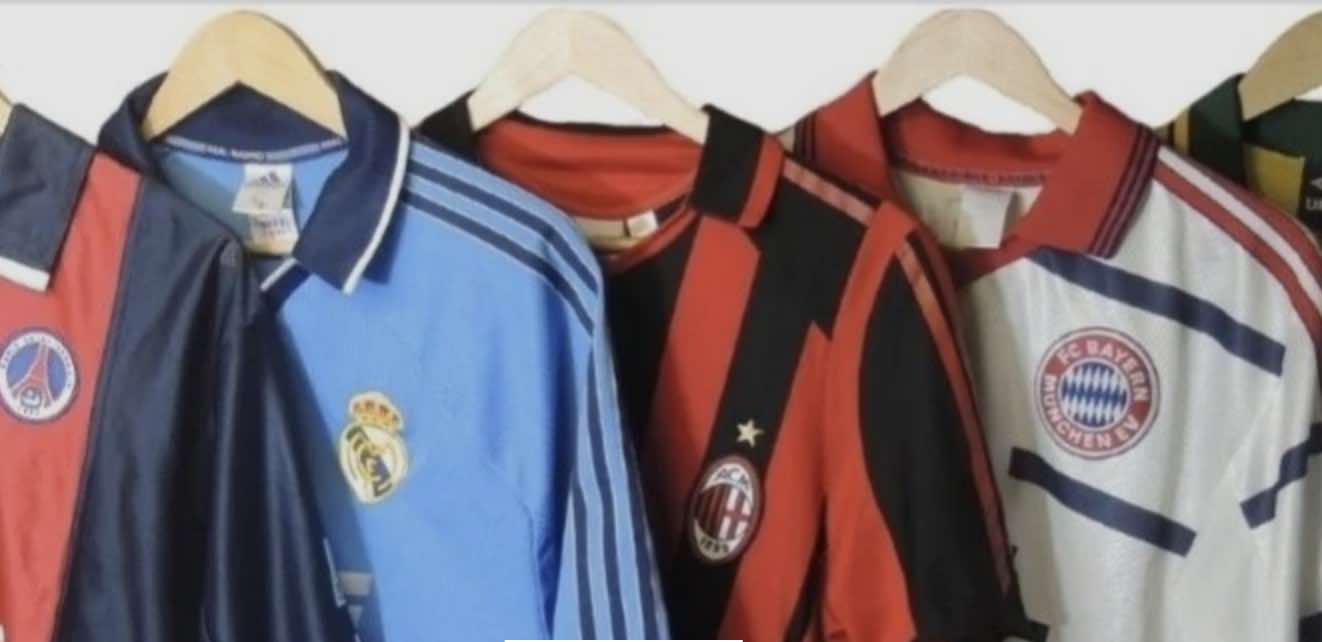Genuine football kits, especially ones from major events in that team’s history, can go for a lot of money. Unfortunately, many people have tried to capitalize on that by creating their own knock-offs or re-creations that get sold as the real thing, which can make it harder to know if you are getting a vintage football kit or just something that looks similar.
How do you tell the difference, and what details should you keep an eye out for? Here are some common tells that can give away a copycat job.
Mistakes
One of the most obvious things that will give away a fake is outright mistakes. If a shirt or some shorts use a different pattern than it should be, or there are simply certain things missing from the kit, then it is probably a fake. This could be something like a company logo, an extra pattern detail, or even a mismatch of different kits that look similar.
It is quite common for some counterfeiters to not really know much about the sport, so they will only research visual reference images unless they are really stuck. This means that they might mix up home and away kits, forget to add anything to the back of the shirt, or even miss other key details that aren’t obvious in still images.
Quality Issues
Another major giveaway is the lower quality of the shirt itself. While older vintage football kits might be worn down if they have been used quite a lot, you can still tell that there is quality behind the stitching, the fit, the accuracy of the sizing, and even the fabric that makes up the kit itself. Counterfeit shirts look the same but are usually made with much less of a budget.
Even if the replica shirt is similar in terms of quality, though, you can usually spot things that give it away. It might use more modern materials that didn’t exist when those shirts were first created or have printed-on logos instead of stitched-on badges.
Price Differences
Price is one of the hardest things to judge as a sign of a fake because some people do not understand the value of kits. However, if the price is at least half as low as it should be, then be wary: it might be somebody trying to sell off a cheap replica at a bargain price to guarantee a sale. This is especially true if the kit is the one currently in use since those do not drop in price for a long while.
Counterfeiters do this to make sure that their shirts are bought: by dropping the price so far, they make it seem like a great deal, which makes people much more likely to buy it instead of any of the legitimate kits. On sites where you can check what a seller has posted, see if they do this with every kit – if they do, then there is definitely something going on.
Vagueness
A lot of football fans are passionate about a retro football shirt or shorts, and even people who aren’t into the sport will usually try to say more about the items so that they can make a sale more likely. For a lot of scammers, though, it is all about getting a sale with the least effort possible, and that means very little information.
Online listings for shirts that include no text at all are a bad sign, and ones with horrible grammar or a poor translation can also be risky unless you know the seller is from another country. A vague description is not always a clear sign that they are trying to cheat you, but you should ideally choose somebody who is at least willing to add a description to the listing that is not auto-generated.
Mismatched Images
Preview images are hard, and a lot of people will take images from other listings online. This means that the classic football shirt you are so willing to buy might have plenty of photogenic images against a white background or one of a stock model, but clearly taken from different sources.
This is even worse if these fancy images show off a great version of the shirt, only for the classic football kit to look even worse in the following images that were clearly taken with a phone camera. Accuracy and consistency are always a good thing when it comes to choosing a product listing.


![[Review] Tanyu (探鱼) Reopens at 313@Somerset with Interactive Skewer Bar and Fresh New Menu [Review] Tanyu (探鱼) Reopens at 313@Somerset with Interactive Skewer Bar and Fresh New Menu - Alvinology](https://media.alvinology.com/uploads/2025/12/WhatsApp-Image-2025-12-13-at-12.17.20-PM-110x110.jpeg)

![[Review] Chef Milind Sovani's Bhoomi Delivers Indian Classic Fares in an Unlikely Orchard Setting [Review] Chef Milind Sovani's Bhoomi Delivers Indian Classic Fares in an Unlikely Orchard Setting - Alvinology](https://media.alvinology.com/uploads/2025/12/bhoomi-orchard-towers-05-110x110.jpg)







